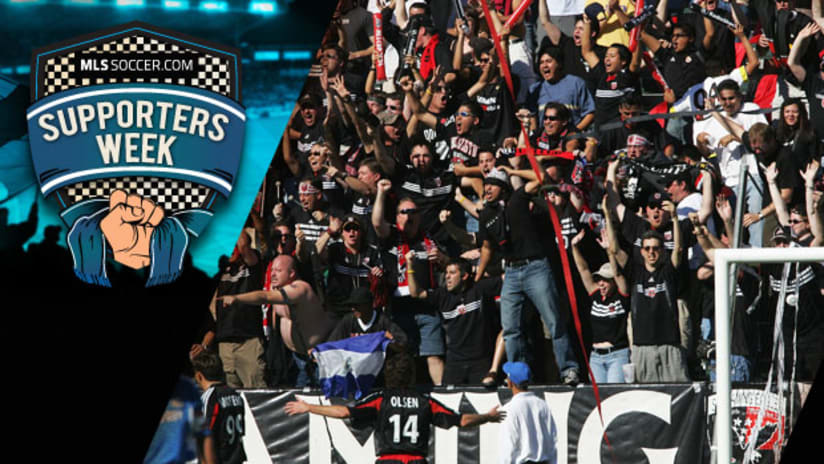NEW YORK -- On any given weekend, you can turn on the TV and see Seattle’s Emerald City Supporters or Portland’s Timbers Army or Philadelphia’s Sons of Ben doing what they do best: supporting their club. They sing, they chant, they unfurl massive banners and wave flags. The atmosphere they create rivals any in the world, from Buenos Aires to Barcelona.
The amazing thing is, it all seems so normal, especially to those supporters. Of course there are passionate fans at the stadium. Of course they sing and display clever tifo. Of course they live and die with their club.
Of course? Well, for many longtime North American soccer fans who grew up in a different, less-soccer-crazy era, the supporters culture around MLS these days still sends chills up and down their spines. Because there was a time when it wasn’t normal, and guys like Matt Mathai, an original member of the Screaming Eagles, one of D.C. United’s longtime supporters groups, got plenty of putdowns and strange looks.
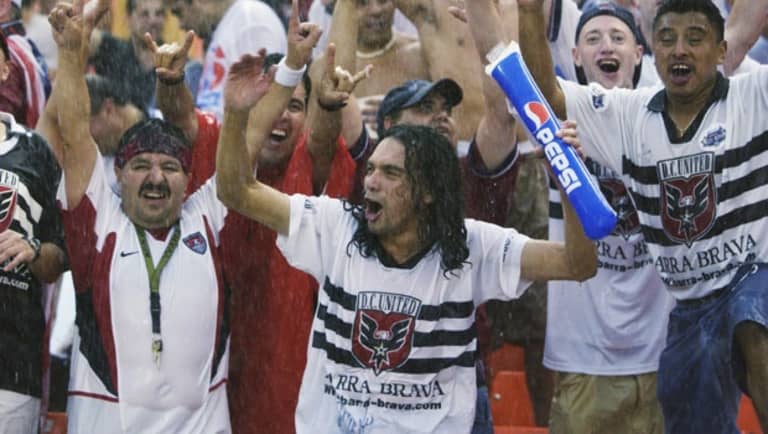
“The less soccer-friendly crowd used to say, ‘Oh look, it’s a bunch of crazies!’” Mathai recalls. “They had no idea why people would want to stand and sing. Singing is not natural in US sports. People started to laugh. But the fans who were soccer savvy — many of the Latino fans — they all got it.”
MLS’ inaugural season in 1996 marked not only the start of a new league and a new era for the game in the United States (and eventually Canada), but also the beginning of American supporter culture. In many ways, the majority of the clubs weren’t ready for it, and they weren’t sure how to co-exist with it and make it part of the fabric of the league.
But some clubs - D.C. United, the LA Galaxy, and later, the Chicago Fire - embraced this new type of fan. They reached out to them and addressed issues that arose between the supporters and the clubs. And they encouraged the type of passion that created “an atmosphere in which everyone knows they should focus on the game as a sporting event and not as a social outing,” as onetime Fire president Peter Wilt puts it.
“The atmosphere was great,” Mathai remembers of early D.C. matches. “People were pumped up. At that point, Screaming Eagles were on the near side, greeting the players as they came off and on. Later, we told club we wanted to be more visible on TV. We thought that would create more atmosphere and attract more people to the group. They hedged, but then we bought the front row of the midfield section.”
That middle section at RFK Stadium quickly became legendary. It remains the most indelible image of supporters from the early years of MLS: the Screaming Eagles and Barra Brava groups bouncing and making the entire stand sway. Their singing and flags helped to define what it meant to “support your club.”
“D.C. set the bar,” says Evan Whitney, an original member of the Midnight Riders, the earliest New England Revolution supporters group. “The prime location at midfield, the famous bouncing fans — if you were a neutral, you saw that and loved it.”
In Support
United’s fans weren’t the only South American-style supporters group in the early days. Among others, the Galaxians in Los Angeles, the Empire Supporters Club in New York, the Inferno in Dallas, the Midnight Riders in New England, and later Section 8 in Chicago — they all strove to bring supporter culture to the stadium.
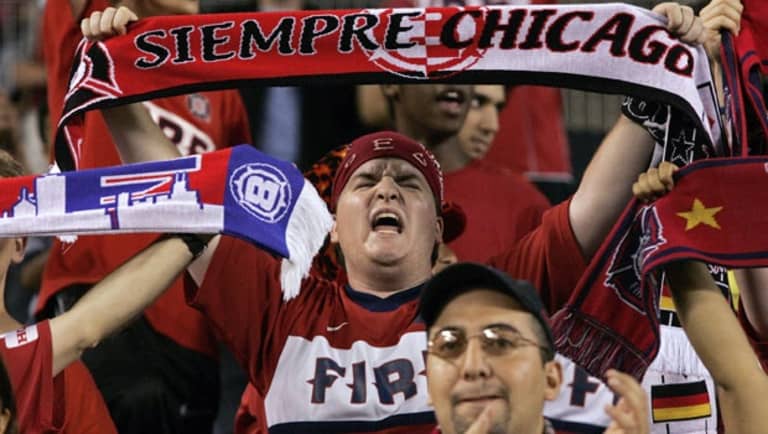
It wasn’t always easy. At the time, much of the league’s marketing was aimed at more casual “suburban” fans — the so-called Soccer Moms — who didn’t fit within the culture of South American-style fandom.
Which is why Wilt, when he was hired as the first president of the Fire ahead of their inaugural season in 1998, was careful not to alienate either group. The two main supporter groups, the Barnburners and Polish Ultras, each were given their own sections — 8 and 9, respectively — and Wilt often joined them during matches.
“We didn’t want [the supporters] in place of suburban soccer families, but in addition,” Wilt says. “Because a) it sells tickets, and b) it enhances the atmosphere of the game. Makes it more of an event. Not just for the supporters. But for everyone.”
Later, after a few security issues and a Wilt-medaited détente, the Chicago supporters were united under the banner of Section 8. Since then, they have been consistent models of diehard support, particularly during the Cuauhtemoc Blanco era, when the Fire were perennial contenders and supremely entertaining.
The Newcomers
MLS took an evolutionary leap in 2007. That year, the league instituted the Designated Player provision — the so-called “Beckham Rule” — and it crossed the border into Canada with the addition of Toronto FC.
From Day 1, TFC’s BMO Field was a cauldron of energy, a petri dish of supporter culture. The members of the Red Patch Boys and others cheered, chanted, booed, threw streamers, and redefined the image of the MLS fan. No longer was the soccer-loving family front and center on the billboards. Now, the spotlight sought out the most passionate fans, the aforementioned “crazies.”
“The culture and passion have always existed,” Wilt says. “But the critical mass didn’t come about until Toronto came in. Toronto should get a lot of credit for ramping it up.”
In the wake of Toronto’s arrival, supporter culture picked up speed. In Seattle, the Emerald City Supporters and other Sounders supporter groups took things to a new level when the club jumped up to MLS in 2009. Their numbers blew everyone else out of the water, and the club went out of its way to work with the group, instituting such initiatives as the Alliance and the Alliance Council.
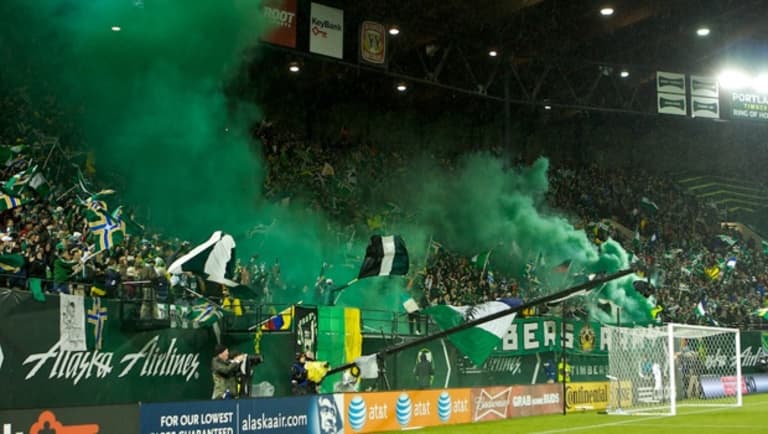
In Philadelphia, a collective of soccer fans who called themselves the Sons of Ben and supported a club that didn’t even exist yet paved the way for the eventual founding of the Union in 2010. Those efforts have inspired similar groups in Miami and Atlanta.
And the arrival of the Portland Timbers and Vancouver Whitecaps in 2011 brought the Timbers Army and the Southsiders into the fold, and raised the bar for rivalries across the league. The Cascadia Cup, contended by Portland, Seattle, and Vancouver, regularly explodes with the same color and noise of the world’s best derbies. This is supporter culture at its best, and for the old timers, it’s justification for their efforts back in the day.
“There’s a new generation with expansion,” Whitney says. “There came a point where the league and clubs recognize that this was all part of the game and embraced it.”
“I think it’s great,” Mathai says. “It’s fantastic. I’m insanely jealous. Anyone who’s honest thinks that.”
That’s not to say some of the MLS originals don’t bristle at the attitude they perceive in some of the newer fans. There is a sentiment that the newer supporters, particularly in the Pacific Northwest, believe that MLS support began when they joined the league.
“I feel a resentful when they say they invented it,” Mathai says. “But I try hard not to get petty and resentful because in the greater scheme, it’s better for the game.”
“Those of us who have been around long enough give them a wry smile and a little laugh,” Whitney says. “It would be nice if Portland and Seattle fans appreciated what came before them. If only not to take for granted what they’re doing.”
And regardless of how many times people marvel at the scenes from CenturyLink Field or JELD-WEN Field, there is still a great atmosphere being created in other stadiums around the league, including the first supporters hotspot.
“When RFK gets going, it’s still pretty cool,” Mathai says. “It’s not the volume of Seattle, but it’s a pretty thrilling place to be. Sure, part of me is resentful of being ignored, in a sense. Because we did break ground. But I really want the game to grow, and I try to wear that hat when I evaluate things. The presence of Seattle, Portland, and Toronto is great for the game.”
The Next Generation
The groundbreaking legacy of clubs like Screaming Eagles and Section 8 continues to inspire fans in new and exciting ways. To wit, Kansas City.
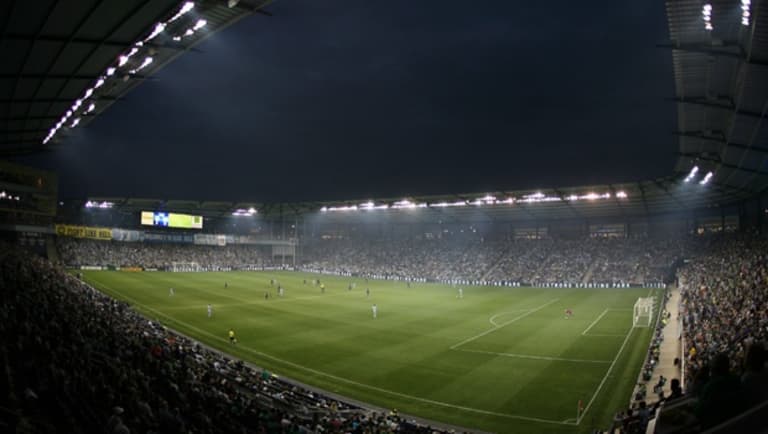
The club has been in the league since the beginning. For many years, they struggled to really capture the city’s sports fans, or even the soccer fans. But the rebranding and the opening of Livestrong Sporting Park in 2011 injected new money and new enthusiasm into the club. Now, the stands overflow with knowledgeable, vociferous supporters. The Cauldron, the area where the diehard fans sit behind the goal, rings with chants and ripples with color, and Sporting KC games are the hottest ticket in town.
It is a very different trajectory than the one taken by Seattle, Portland, Philadelphia, and the other recent newcomers. But it might just be even more important to the growth of the game and the league. According to Wilt, it shows the ideal way for how to transition from the old model to the supporter-first version.
“Sporting’s active supporters story is the best story in MLS history,” Wilt says. “For many years, they had minimal active support. Then overnight, with the new stadium, they not only increased the size of their fanbase, but also the quality. They have a true home-field advantage now.”
Sporting are not the only original franchise to make adjustments and embrace supporter culture. In Columbus, a stadium reconfiguration in 2008 forced the three main supporter groups to unify, creating the Nordecke section of Crew Stadium. The fans in the Nordecke — German for “north corner” — are some of the league’s most enthusiastic. And in Colorado, several new Rapids fan groups arrived in 2010, the same year that the club installed traditional European-style terraces at Dick’s Sporting Goods Park.
“If I’m a potential invester, [the Sporting story] is what excites me,” Wilt says. “That shows me that 20 years from now, the ‘American’ audience is going to embrace this sport, this league, these stadiums, and the future of the game.”

